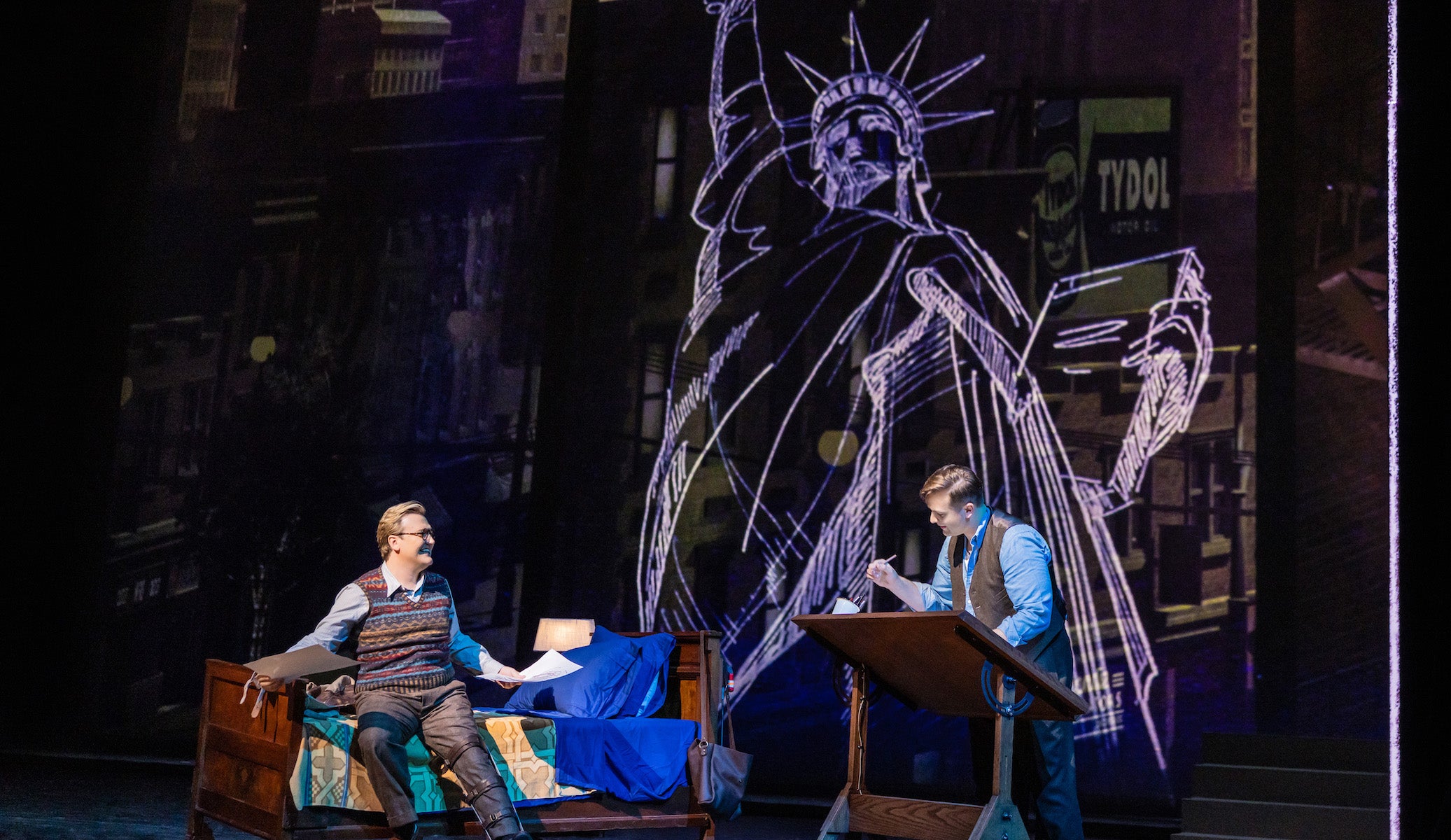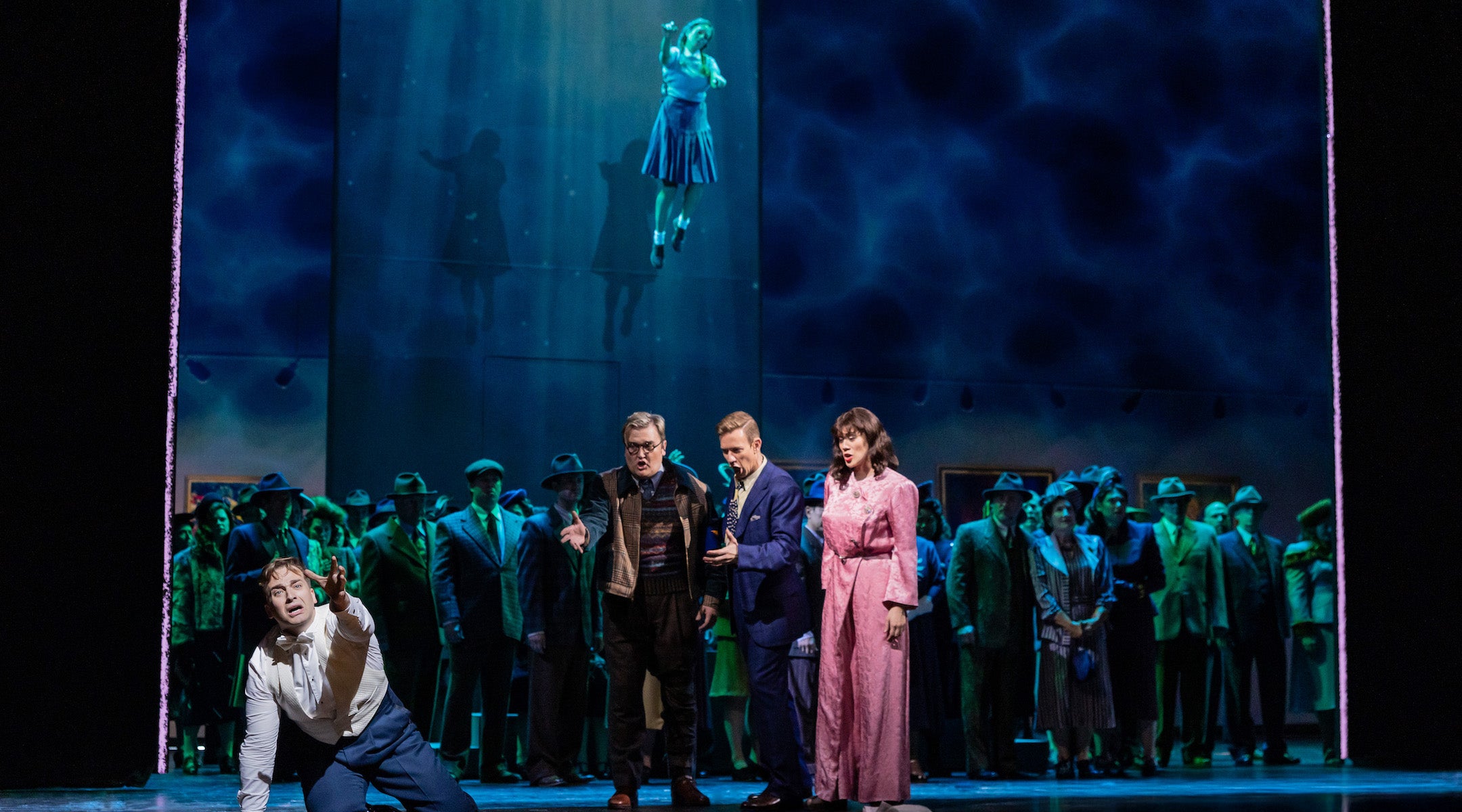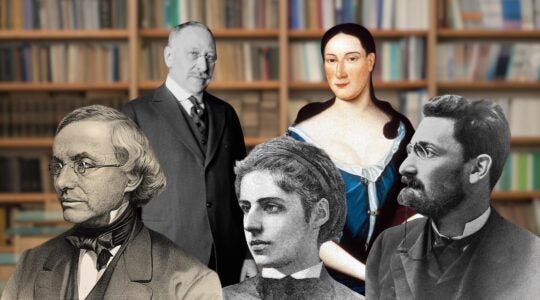Jewish author Michael Chabon’s Pulitzer Prize–winning novel, “The Amazing Adventures of Kavalier & Clay,” is part comic-book origin story, part immigrant saga and part love letter to New York City at its most scrappy and dazzling.
Published in 2000, the novel follows the trajectory of Joe Kavalier, a Houdini-obsessed escape artist who flees Nazi-occupied Prague, and his quick-witted Brooklyn cousin, Sammy Clay. Together they conjure The Escapist, a superhero who punches Nazis on the page while, at the same time, the cousins wrestle with them in real life. The duo’s ascent in the comic book world mirrors the Golden Age of American comics, and the novel delves into themes of Holocaust trauma, Jewish identity, ambition and the transformative nature of pop culture.
And now, 25 years after the novel hit shelves, The Metropolitan Opera is opening its 2025-26 season with a new adaptation of Chabon’s bestselling book. Premiering on Sunday, “The Amazing Adventures of Kavalier & Clay,” the opera, reimagines Chabon’s deeply Jewish comic-panel world for the opera stage, with a score that blends orchestral, jazz and electronic music.
At first glance, an opera based on a book about comics seems like an unlikely combination of high culture and lowbrow. But according to director Bartlett Sher, whose résumé includes the Broadway revivals of “Fiddler on the Roof” and “South Pacific” — as well as eight previous Met productions — there’s a natural affinity between comics and opera, as both are rooted in the storytelling of lived experiences.
“Opera is a very good way to tell this story,” Sher said. “It can kind of cover a lot of time. It can take us to a different world; the music does a lot of that work. I had to build a world in which you can easily, and swiftly and satisfyingly, move from Prague to Brooklyn to a toy factory to the top of the Empire State Building. That’s just a fun challenge.”
Another challenge the creators faced was how to imbue the opera with the inherent Jewishness of the novel — a task that composer Mason Bates took head-on. Over the course of six months, Bates, who is not Jewish, attended services at Congregation Emanu-El in San Francisco, where he lives, to learn more about Jewish culture and tradition.
While searching for a Jewish song of resistance to include in the opera, he came across a version of “Ani Ma’amin” — a song of hope that was reportedly composed in 1942 by Rabbi Azriel David Fastag on a boxcar on the way to Treblinka. Bates loved the musicality of it and incorporated a solemn rendition into the opera with traditional accompaniment. In “The Amazing Adventures of Kavalier & Clay,” “Ani Ma’amin” is sung by a chorus of European Jews as they are carted off to Auschwitz.
“Ani Ma’amin” will also be performed at a “Kavalier & Clay” event at Temple Emanu-El’s Streicker Cultural Center (1 East 65th St.) on Tuesday, in one of several public programs sponsored by the Met. At the free event, members of the cast will perform selected numbers from the opera, and Bates, Sher and librettist Gene Scheer will discuss how the creators captured “the essence of New York Jewry,” among other things.

Miles Mykkanen as Sam Clay and Andrzej Filończyk as Joe Kavalier in a scene from Mason Bates’s “The Amazing Adventures of Kavalier & Clay.” (Evan Zimmerman / Met Opera)
According to immigration historian Miriam Mora — who organized the public programs about the Jewish origins of the comic book industry — Chabon’s novel “played a crucial role in elevating the Jewish history of the comics industry” when it was published 25 years ago.
“It was an incredibly important book for people’s understanding of the comic book industry as a Jewish one,” said Mora, managing director of the Raoul Wallenberg Institute at the University of Michigan. “Until ‘Kavalier & Clay’ came out, which is fiction, but fictionalizes a very real part of American Jewish literary history, it was a pretty unknown story. Since the book was released, interest in this story as a Jewish story, or in the comic book industry as being tied into the Jewish story, has been exponentially higher.”
The Met is also leaning into the World War II setting of the novel, specifically how the protagonists confront fascism and the approaching specter of the Holocaust. “With autocracy on the rise, ‘Kavalier & Clay’ couldn’t be more timely,” Peter Gelb, the Met’s general manager, said in a statement. “Mason’s epic of an opera, although set during World War II, should be an inspiration to those who wish to see present-day fascism defeated.”
As for director Sher, working on “Kavalier & Clay” was a way to connect with his Jewish identity. (Sher grew up Catholic but found out as a teenager that his Lithuanian-born father was Jewish.) Sher told New York Jewish Week that he feels “a responsibility” to accurately portray the Jewish perspective in “Kavalier & Clay.”
“I’m mostly there to help audiences see the truth of where we come from and who we are now,” he said.
Many of the topics addressed in the novel — such as antisemitism, homophobia and tensions over immigration — are sharply relevant today. Just as the novel has continued to resonate with readers over the past quarter-century, Sher hopes the opera adaptation will connect with new and sympathetic audiences.
“This feels like the right story to tell at this time,” Sher said. “The Jewish history of the world, the Jewish commitment to what’s right, is very deep in the piece. And I have a lot of respect and love for that as a person who grew up respecting that culture very deeply.”
The New York Jewish Week brings you the stories behind the headlines, keeping you connected to Jewish life in New York. Help sustain the reporting you trust by donating today.




